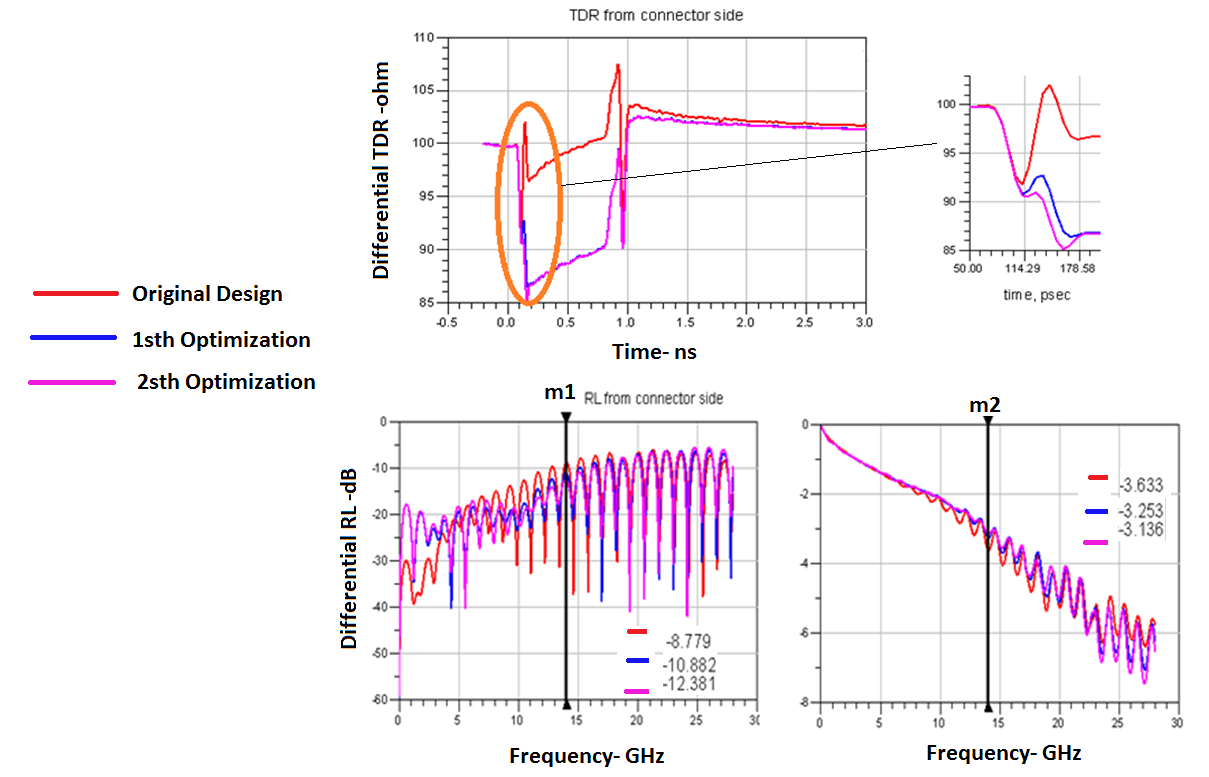AN 766: Intel® Stratix® 10 Devices, High Speed Signal Interface Layout Design Guideline
CFP4 Connector Layout: Signal Via, Trace Routing Impact, and Optimization
This design example shows the impact of a via anti-pad diameter, trace width at the void area, and the main transmission line impedance at the CFP4 connector. Traditional designs for signal via anti-pad at CFP4 have been for a 50 mil diameter. Reducing via anti-pad diameter to 40 mil shows more impedance matching and less reflection. Changing the trace width on the void area also enhances TDR, IL, and RL performances. Combining both these approaches to reduce the signal via anti-pad diameter and increase the trace width on the void area eventually improves reflections in this area. As mentioned in the fan-out for a 90Ω TL routing impedance, you can see the results of this approach at the connector to see the impact on IL and RL.

The red line indicates a 4 mil trace width on the void area with a 50 mil anti-pad, and 100Ω TL impedance.
The dark blue line indicates a 6 mil trace width on the void area with a 40 mil anti-pad, and a 90Ω TL impedance.
The pink line indicates a 9 mil trace width on the void area with a 40 mil anti-pad, and a 90Ω TL impedance.

The IL and RL improvement is about 0.5 dB and 3.6 dB at 14 GHz, respectively.